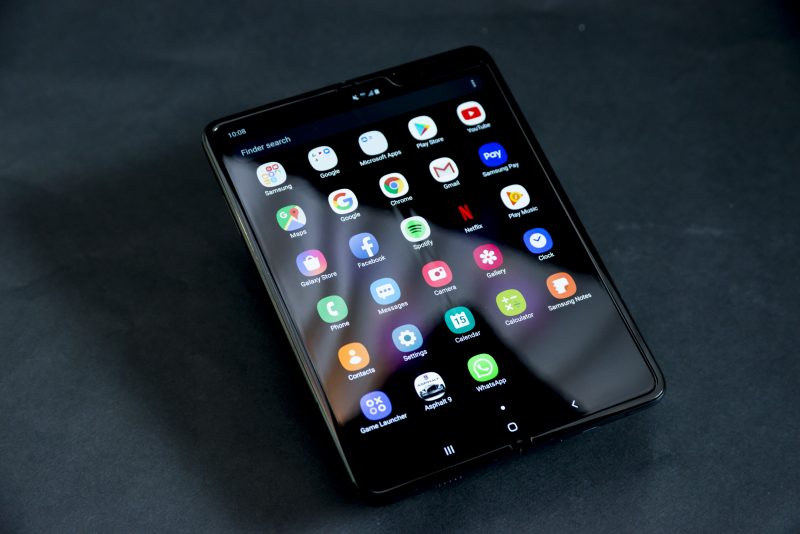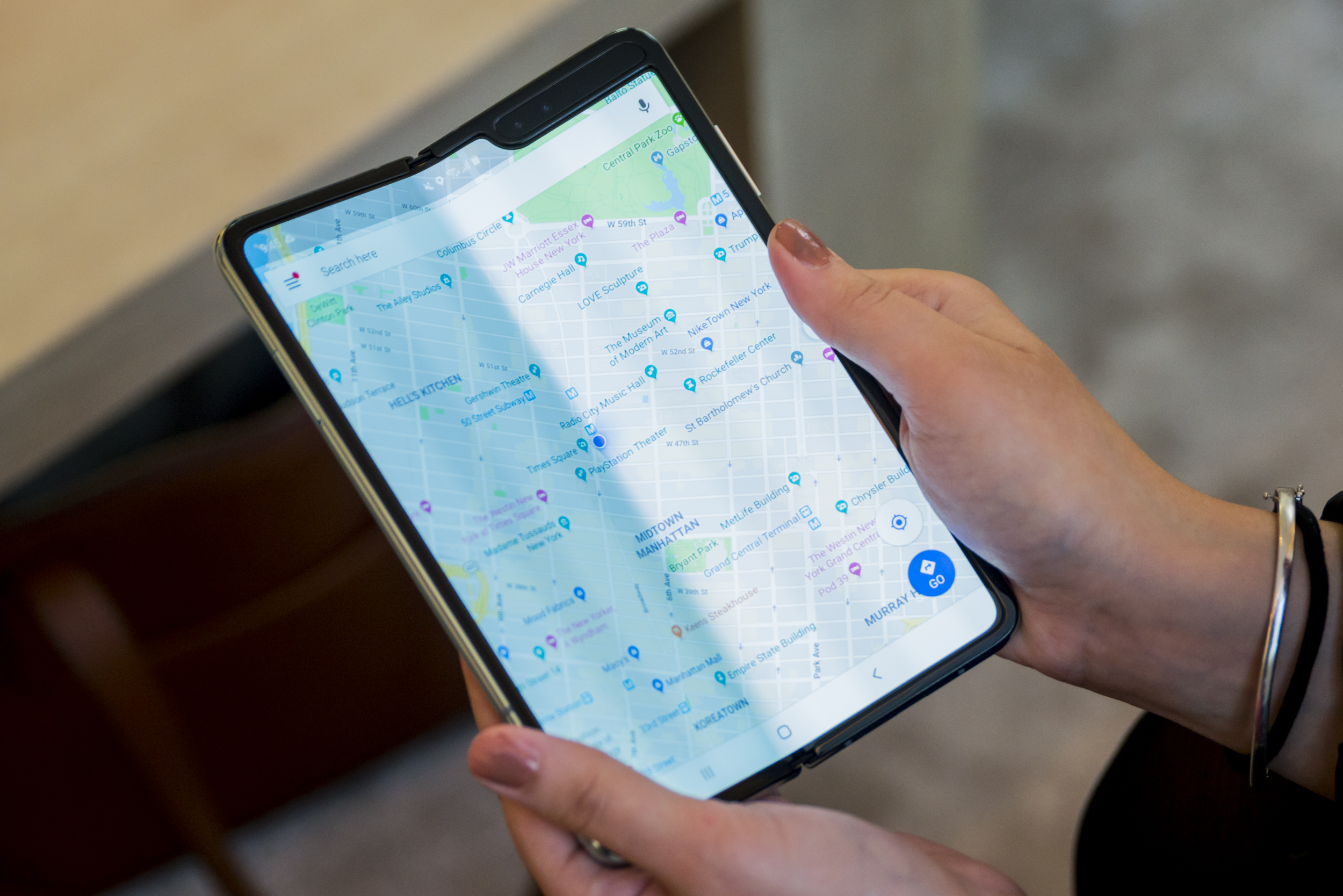- Samsung is the first major smartphone maker to launch a foldable smartphone, the Samsung Galaxy Fold.
- The ambitious $2,000 device was first shown off as a prototype in late 2018, and detailed in early 2019. But when reviewers got the Galaxy Fold in April, several broke.
- Samsung pushed back the release date of the device just days before launch, and pre-orders were cancelled. Months later, it still didn’t have a release date.
- The device is now expected to arrive at some point in September, Samsung announced on Thursday morning.
- Visit Business Insider’s homepage for more stories.
In a single week in April, Samsung’s ambitious $2,000 foldable smartphone went from being a fascinating, awe-inspiring gadget of the future to a disaster.
The Galaxy Fold, which was meant to be the first phone ever with a foldable touchscreen, had been teased, unveiled, and distributed to select tech reviewers in a carefully orchestrated rollout over the past six months. But once in the hands of reviewers, the phone’s foldable screen – and all its mystique – broke down.
Soon after, Samsung acknowledged the inevitable and announced that the Galaxy Fold would be delayed for at least several weeks as the company tried to fix the phone’s problems. Months later, and Samsung finally announced that the Galaxy Fold is scheduled to arrive at some point this September, and only in “select” regions.
So, what happened to Samsung’s Galaxy Fold? Here’s the whole story:
1. In November 2018, Samsung teased its foldable smartphone concept.

Samsung's long-rumored foldable smartphone was first unveiled as a concept during Samsung's annual developer conference, SDC, in San Francisco on November 7, 2018.
Rather than showcasing the phone itself, Samsung showed off a prototype of the device intended to demonstrate a new display type: "Infinity Flex."
No name was given for the forthcoming foldable smartphone, but Samsung promised it was going into production and we'd hear more soon.
In hindsight, the demonstration should've been the first red flag - Samsung showed the prototype shrouded in darkness from a stage, intentionally hiding much of the device.
2. Months passed with no news on Samsung's smartphone concept. The Korean smartphone giant focused on its other device categories during the Consumer Electronics Show in January.

During the annual Consumer Electronics Show in January, Samsung focused on televisions and home appliances over smartphones.
Like it did during the prior year's CES, Samsung demonstrated an absurdly large television dubbed "The Wall." Rather than being one very large panel, "The Wall" is made up of a gaggle of smaller panels that are combined to create the effect of a single large screen.
It wasn't until the following month that we got a closer look at Samsung's new foldable smartphone.
3. Samsung debuted the Galaxy Fold, and gave it a name, during its "Unpacked" event in February.

Samsung's Galaxy Fold was officially debuted and detailed during the company's Unpacked event on February 20.
Instead of being shrouded in darkness, this time the device was shown under the bright studio lights. There was even a demonstration of the phone in action over a relatively lengthy period of time.
It was Samsung's first chance to prove to the world that, yes, the foldable phone is a real product that will be sold to consumers. To that end, Samsung succeeded - the demonstration proved that the Galaxy Fold was a functioning smartphone, albeit one with an absurdly small outer screen.
The device did what Samsung promised it would: It folded, and operated more or less as you would expect a modern smartphone to operate. Here's a look at the folding in action:
During the demonstration, the device appeared to function relatively smoothly, and the transition from standard smartphone to folded open was relatively seamless.
In a strange twist, Samsung didn't allow attendees of its Unpacked event to actually use the Galaxy Fold. Attendees had access to the other Samsung smartphones announced that day (the Galaxy S10 and S10e), but not the Galaxy Fold.
Again, in hindsight, this looks like a red flag.
4. The device was priced at $1,980 and given an April 26 launch date.

It was a pretty big surprise when Samsung announced the price and release date for the Galaxy Fold.
For one thing, April 26 was pretty close to the February announcement - could Samsung turn this prototype into a consumer product that quickly?
Moreover, Samsung gave the device an absurdly high price: $1,980. Could a device that costs double or more than most flagship smartphones possibly live up to the price?
In fairness to Samsung, the Galaxy Fold is the first entry from a major smartphone maker in the foldable smartphone category. And being able to fold your smartphone in half is a pretty novel concept - novel concepts in consumer technology tend to cost a lot of money for the first adopters.
5. In mid-April, just ahead of the planned April 26 launch of the Galaxy Fold, Samsung offered an opportunity for the media to use it. The early impressions were largely positive.

When Business Insider's Lisa Eadicicco tried out the Galaxy Fold in mid-April, she had largely positive things to say about the device.
"Many of the features Samsung touted onstage when unveiling the Galaxy Fold worked easily and fluidly in use," Eadicicco wrote. "When Google Maps was used in phone mode, for example, a more full version of the map appeared in tablet mode as soon as I opened it, with no stutter or lag. Running three apps at once on the screen is as simple as swiping in from the right side of the screen and choosing the app you'd like to launch."
And how about the key function of the phone, folding?
Samsung promised up to 200,000 folds before the device starts breaking down.
6. But just days later, review units started failing for a variety of different reasons.

Samsung provided review units of the Galaxy Fold to a variety of different publications and YouTube channels, from Business Insider to Marques "MKBHD" Brownlee to the Wall Street Journal. By our estimate, at least a dozen outlets were given review units to test.
Of those, at least four units outright failed.
The reasons varied: Some broke from normal use, and some broke because the reviewer removed a thin sheet of plastic - a screen protector - which was supposed to stay on the device (more on that in a moment).
To be clear: This is far from normal.
When a smartphone maker sends out review devices of its products, those units are intended to represent the consumer experience. If those units break, especially in such a large quantity, it represents a potentially major problem with the units that buyers will receive.
7. The Galaxy Fold screen protector became a major sticking point.

If you've ever purchased a new piece of consumer electronics - from a smartphone to a cable modem - you've probably peeled a thin layer of plastic protection from the device.
It's a pretty standard procedure: Take the product out of its box, remove any plastic, and get down to business. Even the Galaxy Fold, when first taken out of its box, has a large sheet of plastic surrounding it.
Check out unboxing below and see for yourself:
But, in addition to that plastic wrapper, Samsung placed a thin layer of plastic protection over the inner screen. And that second plastic layer also appears to be removable.
But removing that second layer is no-no that can have tragic consequences. Removing the screen protector from the Galaxy Fold's larger, inner screen results in the screen no longer working. Worse: If you start peeling the protector and realize it shouldn't be removed, it's hard to un-do the process. As the Wall Street Journal's Joanna Stern quickly learned with her review unit, even a little bit of peeling can doom the whole device.
8. A few days later, Samsung officially delayed the Galaxy Fold. A new release date was expected in the following weeks, but it never came.

The next week, after days of being pilloried in the press, Samsung issued a statement officially delaying the Galaxy Fold's planned April 26 launch.
Here's Samsung's full statement:
"We recently unveiled a completely new mobile category: a smartphone using multiple new technologies and materials to create a display that is flexible enough to fold. We are encouraged by the excitement around the Galaxy Fold.
"While many reviewers shared with us the vast potential they see, some also showed us how the device needs further improvements that could ensure the best possible user experience.
"To fully evaluate this feedback and run further internal tests, we have decided to delay the release of the Galaxy Fold. We plan to announce the release date in the coming weeks.
"Initial findings from the inspection of reported issues on the display showed that they could be associated with impact on the top and bottom exposed areas of the hinge. There was also an instance where substances found inside the device affected the display performance.
"We will take measures to strengthen the display protection. We will also enhance the guidance on care and use of the display including the protective layer so that our customers get the most out of their Galaxy Fold.
"We value the trust our customers place in us and they are always our top priority. Samsung is committed to working closely with customers and partners to move the industry forward. We want to thank them for their patience and understanding."
The following month, Samsung began sending emails to customers who pre-ordered the device with a warning: Your pre-order will be cancelled automatically if the Fold doesn't ship by the end of May. You can actively opt-in to the pre-order, but anyone who doesn't will have their pre-order cancelled. May came and went without a new release date.
9. Finally, in July, Samsung gave the Galaxy Fold a new release window: September. The device also got a few changes.

After weeks of silence, Samsung finally announced the release of the Galaxy Fold for September. There's no specific date given, and the device will only be available in "select" regions. "Availability details will be shared as we get closer to the launch," Samsung announcement says.
So, what's different about the Galaxy Fold coming in September? Not a lot, but the changes that were made are critical.
Here's Samsung's full list:
-"The top protective layer of the Infinity Flex Display has been extended beyond the bezel, making it apparent that it is an integral part of the display structure and not meant to be removed. -Galaxy Fold features additional reinforcements to better protect the device from external particles while maintaining its signature foldable experience: The top and bottom of the hinge area have been strengthened with newly added protection caps, additional metal layers underneath the Infinity Flex Display have been included to reinforce the protection of the display, and the space between the hinge and body of Galaxy Fold has been reduced."

